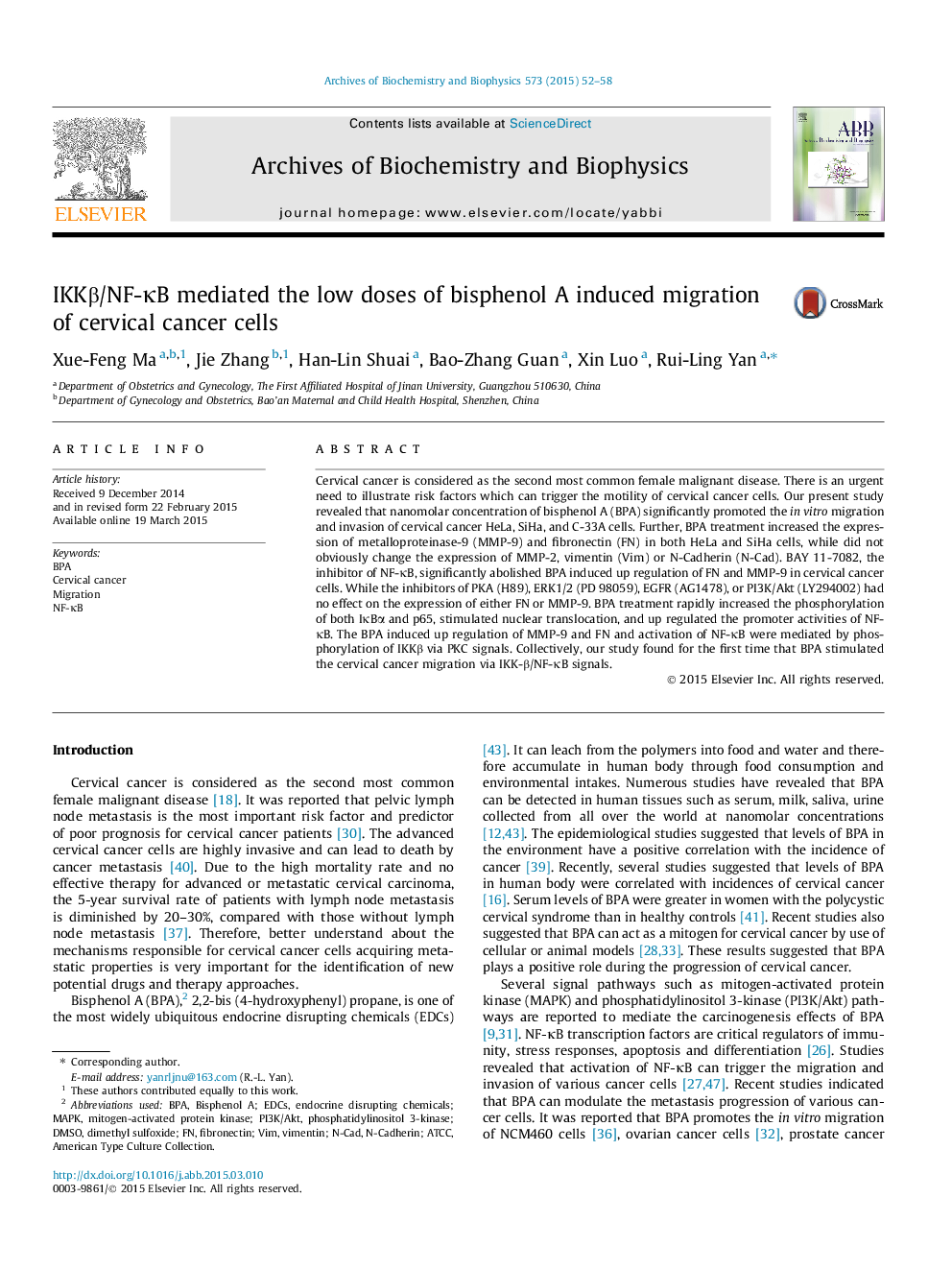| Article ID | Journal | Published Year | Pages | File Type |
|---|---|---|---|---|
| 1924953 | Archives of Biochemistry and Biophysics | 2015 | 7 Pages |
•BPA promoted the migration of cervical cancer cells.•BPA increased the expression of FN and MMP-9.•NF-κB mediated BPA induced up regulation of FN and MMP-9.•BPA increased the phosphorylation of IKKβ.
Cervical cancer is considered as the second most common female malignant disease. There is an urgent need to illustrate risk factors which can trigger the motility of cervical cancer cells. Our present study revealed that nanomolar concentration of bisphenol A (BPA) significantly promoted the in vitro migration and invasion of cervical cancer HeLa, SiHa, and C-33A cells. Further, BPA treatment increased the expression of metalloproteinase-9 (MMP-9) and fibronectin (FN) in both HeLa and SiHa cells, while did not obviously change the expression of MMP-2, vimentin (Vim) or N-Cadherin (N-Cad). BAY 11-7082, the inhibitor of NF-κB, significantly abolished BPA induced up regulation of FN and MMP-9 in cervical cancer cells. While the inhibitors of PKA (H89), ERK1/2 (PD 98059), EGFR (AG1478), or PI3K/Akt (LY294002) had no effect on the expression of either FN or MMP-9. BPA treatment rapidly increased the phosphorylation of both IκBα and p65, stimulated nuclear translocation, and up regulated the promoter activities of NF-κB. The BPA induced up regulation of MMP-9 and FN and activation of NF-κB were mediated by phosphorylation of IKKβ via PKC signals. Collectively, our study found for the first time that BPA stimulated the cervical cancer migration via IKK-β/NF-κB signals.
